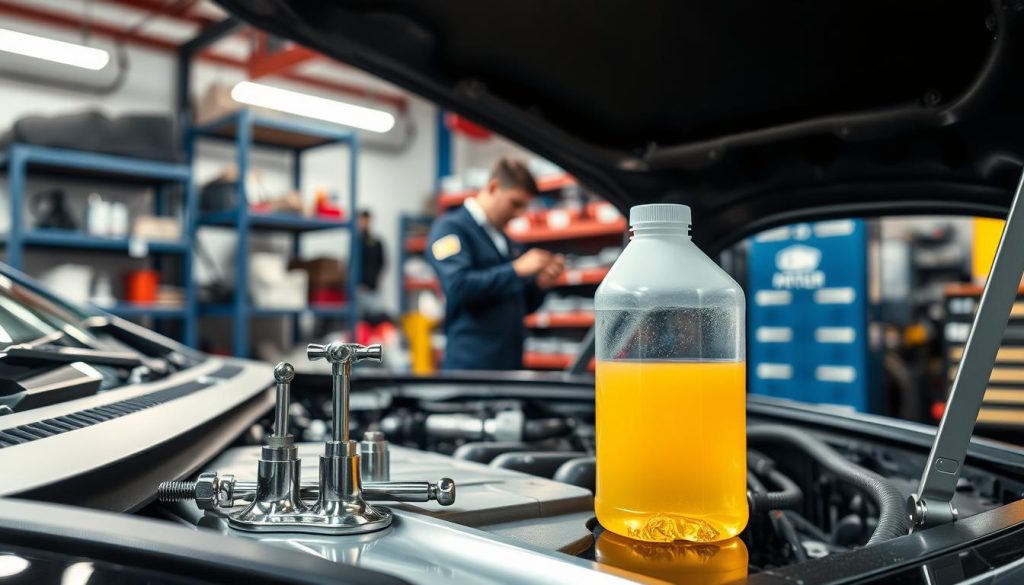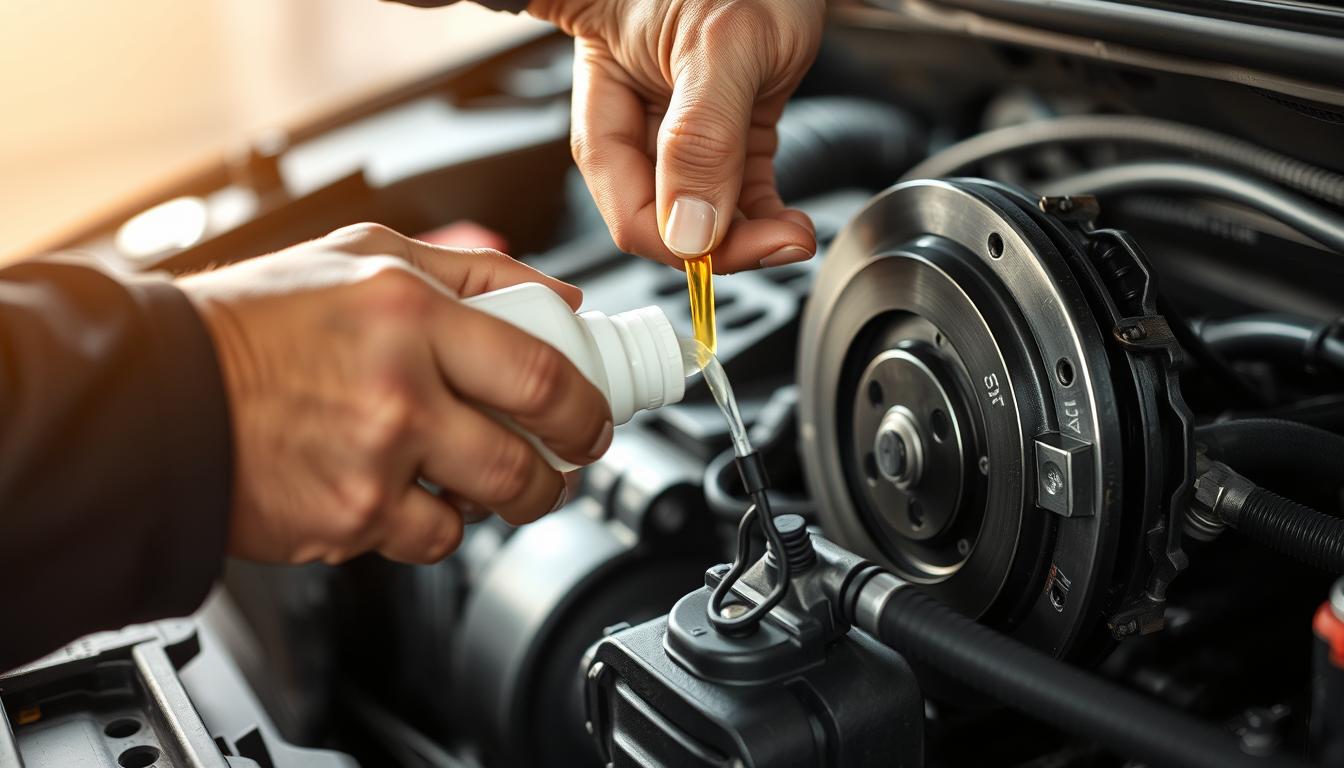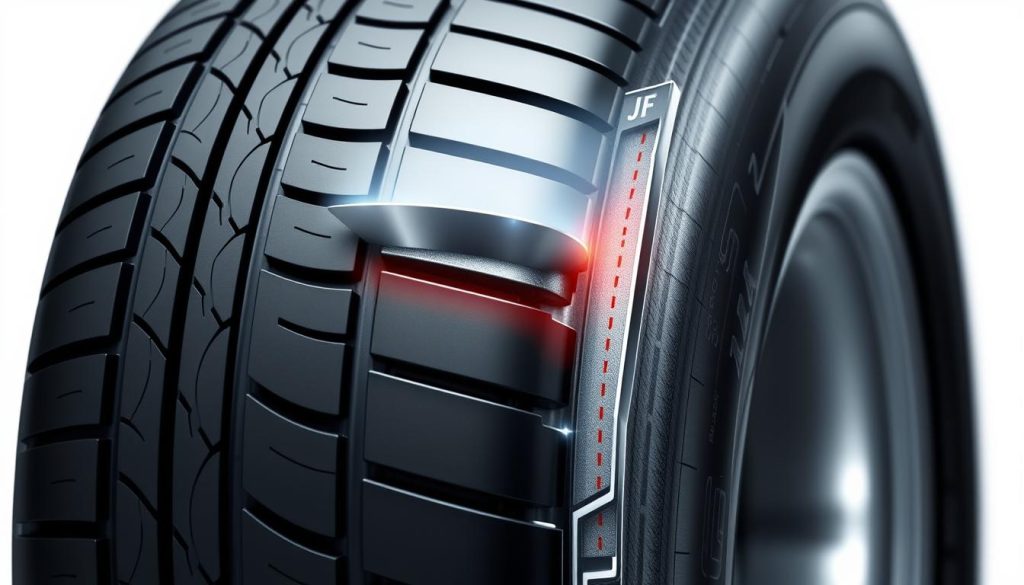Keeping your vehicle safe is very important. One key part of this is replacing brake fluid regularly. Brake fluid is like the blood of your brakes, helping them work well.
But, brake fluid can get dirty over time. This makes your brakes less effective and can be very dangerous. It’s vital to keep your brake fluid clean to avoid accidents.
By getting your brake fluid flushed often, you keep your car safe. This way, you can drive without worry.
Key Takeaways
- Brake fluid can become contaminated and lose effectiveness over time.
- Flushes are recommended every 30,000 miles or every 2 years, depending on driving habits.
- Neglecting brake fluid maintenance can lead to accidents and costly repairs.
- Inconsistent brake performance may indicate contaminated brake fluid.
- Regular maintenance helps extend the life of brake components.
- Brake fluid absorbs moisture, which can lower its boiling point and affect performance.
Understanding Brake Fluid and Its Role
Brake fluid is very important in our cars. It makes our brakes work better and keeps us safe. Let’s learn what brake fluid is and how it helps our brakes.
What Is Brake Fluid?
Brake fluid is a special liquid for our car’s brakes. It helps make our car stop by moving force from the pedal. Most cars use DOT 3, DOT 4, and DOT 5.1 fluids. These fluids keep the brakes from rusting by soaking up moisture.
How Brake Fluid Works in Your Vehicle
When we press the brake pedal, fluid moves. It goes from the master cylinder to the brake lines. This makes the brake pads push against the rotors or drums.
This action is key for stopping well. The fluid must not boil from heat. If it does, our brakes won’t work right.
The Importance of Hydraulic Brakes
Hydraulic brakes need good brake fluid to work. Bad fluid can make the pedal feel soft. This makes stopping hard.
We should check and change the brake fluid often. This keeps our brakes working well. Knowing how brake fluid helps us stay safe is important.

The Problem with Contaminated Brake Fluid
Contaminated brake fluid is a big risk for our cars. It’s important to know how moisture affects brake fluid. We also need to watch out for corrosion risks.
Ignoring brake fluid problems can be very dangerous. We must pay close attention to this.
How Moisture Affects Brake Fluid Performance
Glycol-based brake fluids soak up moisture from the air. This makes the fluid less effective over time. As moisture builds up, the fluid’s boiling point drops.
When it gets hot, steam can form. This causes vapor lock and makes brakes less effective. We might notice our brakes feel spongy or take longer to work.
Corrosion Risks Associated with Degraded Fluid
Moisture in brake fluid can cause corrosion. When the fluid’s additives wear off, metal parts start to rust. This can lead to leaks and damage the brakes.
Petroleum-based contaminants can also harm rubber seals. This increases the chance of brake failure.
Potential Consequences of Neglecting Brake Fluid
Not fixing brake fluid problems can be very risky. It can make stopping harder and less effective. This can lead to dangerous situations on the road.
Also, if the brake fluid looks dark or has particles, it’s contaminated. We need to get it checked right away. Regular checks help keep our brakes working well and keep us safe.
Why Brake Fluid Replacement is Important
Keeping our car’s brakes in good shape is key for safety and how well it works. Replacing brake fluid often is very important. It makes our brakes work better and stops big problems in the braking system.
Boosting Brake Performance and Responsiveness
Flushing brake fluid makes our brakes work better. Old fluid can get wet and lose its strength. This makes our brakes not as strong.
New fluid is yellow and ready to go. Changing it often keeps our brakes working well. It makes driving safer and smoother.
Preventing Major Brake System Repairs
Not changing brake fluid can lead to big repair costs. Dirty fluid can cause rust and damage. This can cost a lot to fix.
Changing the fluid every 30,000 miles or two years helps. It’s a small cost of $20 to $100. It saves us from expensive repairs later.

Signs You Need a Brake Fluid Flush
We must watch for brake fluid flush signs. A soft or spongy brake pedal is a big warning. It means low brake fluid or air in the lines.
This can make braking bad. So, we must fix it fast. Also, an ABS light on the dashboard means low brake fluid. This is very dangerous.
Indicators of Low or Contaminated Fluid
Dark brown or black brake fluid is a bad sign. It should be clear or yellow. If it’s dark, it’s time for a flush.
Strange noises or smells when braking are also bad signs. If brakes need frequent bleeding, it’s a problem. We need a pro to fix it.
Common Symptoms of Brake System Issues
Poor braking is a big warning. It could be from low fluid or contamination. If our car doesn’t stop well, we need help fast.
Changing brake fluid every 30,000 miles or two years helps. It keeps us safe on the road.



